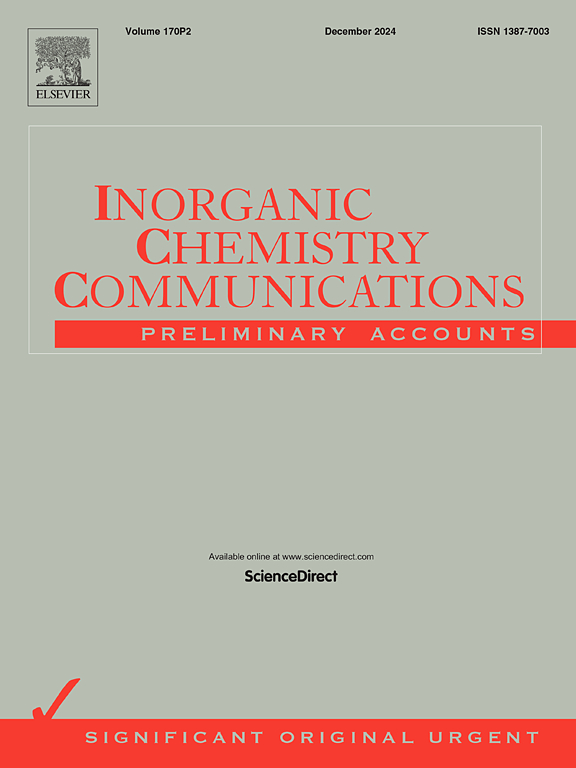回收废旧锂离子电池作为高性能硅/碳复合材料阳极的可持续碳源
IF 4.4
3区 化学
Q1 CHEMISTRY, INORGANIC & NUCLEAR
引用次数: 0
摘要
随着电动汽车的快速发展,锂离子电池组的无害化处理和回收利用已成为当前的研究热点。本工作开发了一种充电-拆解-氧化-浸出的方法来回收废旧锂离子电池阳极,制备再生石墨(RG)。在不同的充电状态(SOC)下对电池组进行充电,然后进行安全拆卸、氧化和浸出,从阳极中回收石墨。SEM图像显示处理后的再生石墨呈层状结构;拉曼光谱和XRD分析结果表明,当充电至100%荷电状态时,RG具有更多的缺陷。在0.1C下循环100次时,RG的放电容量为319.54 mAh·g−1。将RG材料与纳米硅颗粒通过高能球磨法制备成Si/C复合阳极,其放电容量为430.67 mAh·g−1,放电温度为0.1C,循环次数为100次,放电容量比单独使用RG材料高34.78%。CV分析还揭示了复合材料中硅和石墨的特征充放电行为。该方法为今后废旧锂离子电池阳极的回收利用提供了新的途径。本文章由计算机程序翻译,如有差异,请以英文原文为准。

Recycling spent lithium ion battery as sustainable carbon sources of high-performance Si/C composites anodes
With the rapid development of electric vehicles, the harmless treatment and recycling of lithium ion battery packs have become the current research focus. This work developed a charge-disassemble-oxidize-leach method to recover spent lithium ion battery anodes to prepare recycled graphite (RG). The battery packs were charged at various state of charge (SOC), followed by safe disassembly, oxidization and leach to recover graphite from the anodes. SEM images showed the layered structure of recycled graphite after treatment; Raman spectroscopy and XRD pattern indicated the RG had more defects when charged to 100 % SOC. The RG showed 319.54 mAh·g−1 discharge capacity when cycled under 0.1C for 100 cycles. The RG material was then prepared into Si/C composite anode with silicon nanoparticles via high energy energy ball milling, and showed discharge capacity at 0.1C over 100 cycles at 430.67 mAh·g−1, which was 34.78 % higher than that of RG alone. CV analysis also suggested characteristic charge and discharge behavior for silicon and graphite in the composite. This method provided a new approach for the future recycling and reusing of spent lithium ion battery anodes.
求助全文
通过发布文献求助,成功后即可免费获取论文全文。
去求助
来源期刊

Inorganic Chemistry Communications
化学-无机化学与核化学
CiteScore
5.50
自引率
7.90%
发文量
1013
审稿时长
53 days
期刊介绍:
Launched in January 1998, Inorganic Chemistry Communications is an international journal dedicated to the rapid publication of short communications in the major areas of inorganic, organometallic and supramolecular chemistry. Topics include synthetic and reaction chemistry, kinetics and mechanisms of reactions, bioinorganic chemistry, photochemistry and the use of metal and organometallic compounds in stoichiometric and catalytic synthesis or organic compounds.
 求助内容:
求助内容: 应助结果提醒方式:
应助结果提醒方式:


